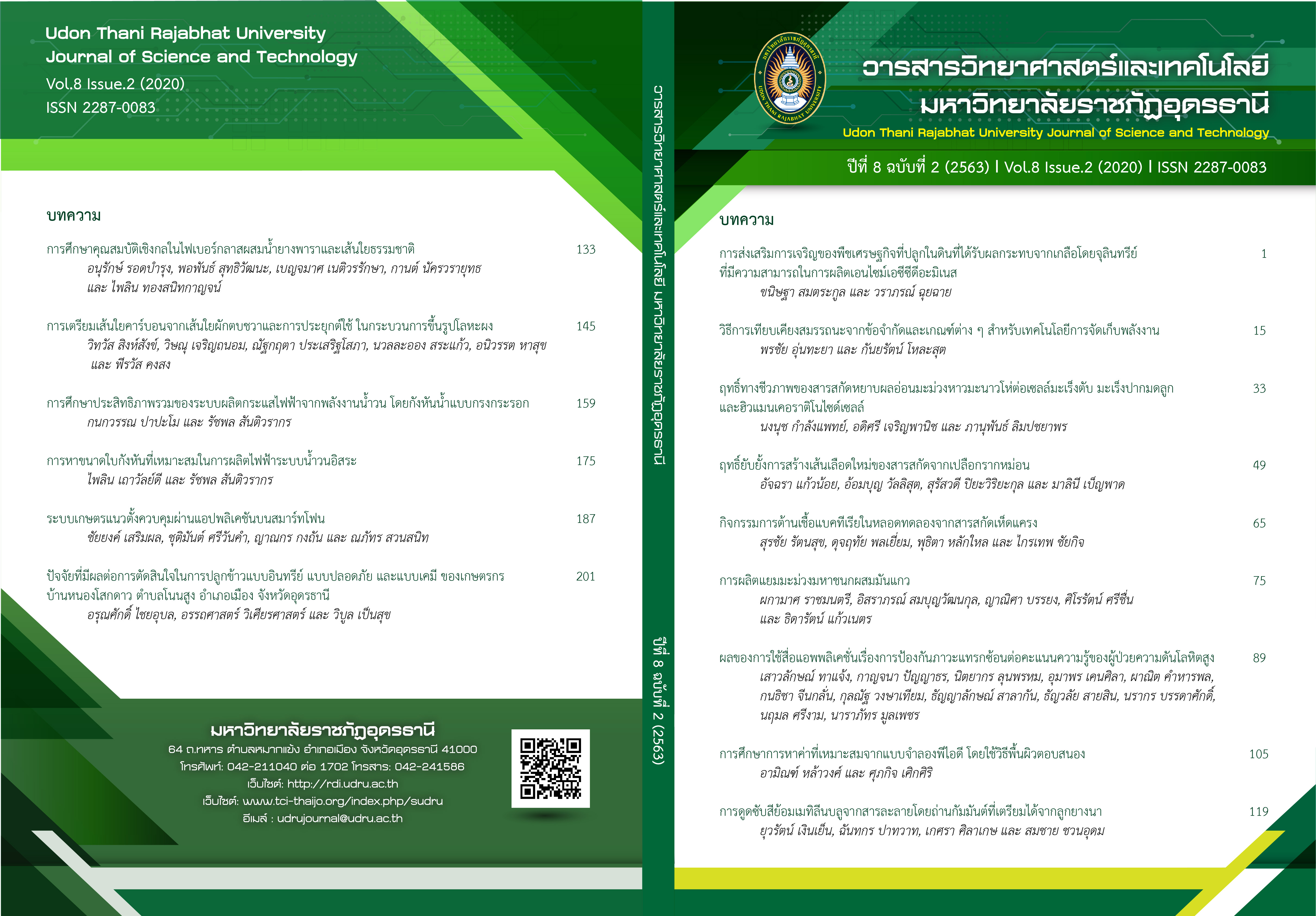MULTI-CRITERIA BENCHMARKING METHOD FOR ENERGY STORAGE TECHNOLOGIES
Main Article Content
Abstract
Economic growth in the renewable energy sector from fluctuating and unstable energy sources can be made more reliable and efficient by integrating with energy storage systems.The main objective of this study was the development of comparable performance analysis tools called the Normalization of Frontier of the Best Method (NFB) to facilitate the decision-making process in choosing the most suitable energy storage technology for application under various restrictions and criteria. The developed NFB method was validated against the rankings of the 2016 Olympics, decathlon and the difference was examined by using the Kendall rank correlation coefficient, it was found that the decathlon's z-value was 5.3528 with a confidence level greater than 99%, the NFB method was used to compare energy storage technologies under 9 efficiency criteria and 3 cost criteria by classifying energy storage technology into 5 groups which were Electrochemical energy storage, Mechanical energy storage, Electrical energy storage, Thermal energy storage and Chemical Energy. The results of each group's ranking to find the best technology in each group were Li-ion, PHES (Pumped hydro energy storage), Supercapacitors, Thermal energy storage and Fuel Cells respectively.
Article Details
References
Andrews, J., & Jelley, N. (2013). Energy science; principles technologies and impacts. 2nd ed. Oxford, United Kingdom: Oxford university press.
Elton, J. C. (2004). Batteries, Overview, Encyclopedia of energy, vol. 1.
Gail, T. (2012). Our Finite World. Retrieved August 22, 2018 form https://ourfiniteworld.com/world-energy-consumption-since-1820-in-charts/.
Grigorios L. K., & Garyfallos, A. (2016). Electrical energy storage systems in electricity generation: Energy policies, innovative technologies, and regulatory regimes. Renewable and Sustainable Energy Reviews, 56, 1044-1067.
Hamidreza, Z., Anthony, S., William, R., & Marc, B. (2014). Energy Storage for Mitigating the Variability of Renewable Electricity Sources, in Energy Storage for Smart Grids. Calgary, Canada: Academic Press., 1-33.
Holasut, K. (2006). Benchmarking Analysis. Quality Assurance Journal KKU, 7(2), 17-27. (in Thai).
International Energy Agency. (2016). Renewables. Retrieved January 19, 2019 form http://energyatlas.iea.org/?subject=-1076250891.
Maurice, G. (1970). Kendall Rank Correlation Methods. 4nd ed. London: Charles Griffin & Company Limited 42 Drury Lane.
Mueller, C. S., Philipp, G. S., & Isabell M. W. (2014). Monitoring innovation in electrochemical energy storage technologies: A patent-based approach, Applied Energy, 137, 537-544.
Sportcalculators. (2016). Decathlon calculator. Retrieved October 30, 2019 form http://www.sportcalculators.com/decathlon-calculator.
The International Renewable Energy Agency (IRENA). (2013). Renewable Energy. www.etsap.org-www.irena.org. Retrieved June 24, 2019 form https://www.irena.org/DocumentDownloads/Publications/IRENAETSAP %20Tech%20Brief%20E17%20Thermal%20Energy%20Storage.pdf.
World nuclear association. (2016). Nuclear Essentails. Retrieved January 11, 2019 form http://www.world-nuclear.org/information-library/ country-profiles/countries-a-f/france.aspx.


